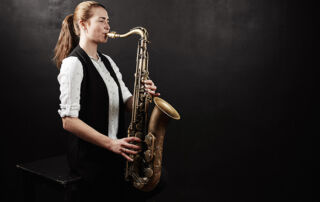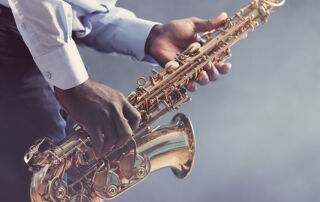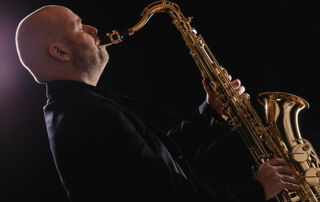How to practise your scales and enjoy it
First of all - do not try to learn all 12 scales at once.
Do only one or two scales each week and within 2 months you could have command over all 12 scales, if that is your main vision.
It's best to do only a few at a time and make sure that you know them well, before adding new ones.
- Use the circle of fifths for your systematic learning. I find that the best way is to add sharps one at a time. It's systematic and helps to know how the scales move to the next scale.
- You can also use the chromatic scale system, learning one scale after the other. This could sometimes be quite challenging moving from no sharps and flats as in C major to the next scale C sharp minor with 7 sharps. The third system is by first learning either the scales that start on all the white keys and then all the scales starting on the black notes.
- The fourth system is by using the ABRSM grades or Trinity College of Music syllabuses from Grade 1 upwards - doing the scales prescribed there. I do however find the circle of fifths the best as it gives you insight in how the scales hook into each other. Using the circle of fifths becomes important later in usage of harmony and chords too.
How would you practise?
- First of all you need to know how each scale looks on the keyboard or at least the scale that you are going to play.
- Just fumbling around or trying to remember the notes each time won't be good.
- Having a clear picture in your mind of each scale is key! As I have discussed in a previous article, it's important to get a clear picture of how the scales you are working on look. A picture is like a photo in your brain. Of Course fumbling around when working it out by ear is absolutely fine and important and not wrong at all. That is the only way to progress with a good ear for music. Try out and hear with your ears if you are playing Do Re Mi Fa So La Ti Do.
- After you have visually set the picture of the scale in your mind and on the keys you are ready to practise.
- When you practise make sure you use the correct fingering. Using the correct fingering each time is absolutely crucial.
- It's best to first learn your scales with each hand separately.
- As soon as it is secure, the hands can be put together.
- For the beginner, I suggest that you simply keep it all apart until you have covered all 12 scales and are sure of fingering for both Left hand and Right hand.
Let your fingers really work!
See the fingers as little horses as I normally think of them. Fingers have to be lifted properly to execute the note playing.
Make sure it's the fingers working and not the hand pushing down the notes, especially when the thumb is put under a finger.
It's very important to move the hand sideways to make room for the thumb to go under and NOT upwards.. With the upward movement many students use the hand to play the thumb note by letting the hand play the thumb note with a up and down ward movement of the hand. This creates a bump sound in scale playing and does not sound nice at all.
Wonderful ways to practise your scales:
Use your metronome to get perfectly steady playing.
Play one note per beat at a very slow speed and make sure you execute every note and finger correctly.
You can use a metronome drill here every time when you play it correctly, moving it to a slightly higher speed. It's amazing to be able to reach a speed you did not think is possible after a while! The metronome is a bit like a robot teacher and it helps one to concentrate and have a goal. Do not just play without hearing though! If you are not 100% playing with each beat - metronome drill could be a waste of time. It give one a great trill when you reach a high speed, (regardless if its really fast or just what you can reach at this given stage) it does not matter, for eventually you will be able to fly over your keys if you consistently just play your one or two scales every day or as much as possible.
Practise your scale in accents!
- When playing your scale, give it a beat.
- Count in fours. One two three four. One two three four while playing and put a CLEAR accent on the first beat which is nr one.
Most students struggle with counting and playing as the hand naturally wants to put the thumb on number one but this is not the case here. Just keep at it until you get the beat.
- Practise extremely slowly and actively picking up the finger that is going to play on beat 1 high up so that you can make a difference in the sound - creating an accent. Make sure you can hear these accents clearly. With the first try, it can be quite challenging and frustrating but with two or three times talking to yourself loudly you will soon find it easy!
- Talk to yourself and count loudly not softly! Counting the One two three four and picking up the finger high for the One beat, you will soon get the feel. After that it becomes natural! Like driving your car.
Just a bit of concentrating, talking, counting and thinking and you will soon enjoy the accents. When playing scales fast and over many octaves, the accents are absolutely needed to keep the scale controlled and crisp. Take note that the accent is not executed by the hand or the jerking of the hand downwards but by lifting the specific finger up higher to give it greater movement downwards to be able to execute a clear accent.
When starting to play accents students often get mixed up with counting and playing fingers but you will soon find that you can do it. Do it extremely slowly and hands separately until secure .
Practice scales with Rhythms! I find playing rhythms is a lot of fun.
There are 3 basic rhythms to use. The first rhythm is the easiest and will be enough for the beginner and semi-advanced student.
Rhythm Nr. 1
The rhythm consists of a consecutive movement of a long and then a short or fast note - repeated over and over. This is used with French time names where you say the following: taa-fe taa-fe. taa-fe and the sound is that of a dotted 8th note and a 16th note repeatedly used. Saying Taa-fe taa-fe taa-fe while playing the scale notes is a great way of training the fingers to move quickly after the long note.
Rhythm Nr. 2
There is also the rhythm consisting of a long note and two fast short notes. Calling it out as Taa-te-fe. Taa-te-fe. Taa-te-fe. It is effectively an 8th note followed by two 16th notes played repeatedly.
Rhythm Nr. 3
The third rhythm is a long note followed by 3 fast or short notes. Here you can find a word rhyme to help you like saying: I..... play with the cat, play with the cat, play with the cat, etc.
Using the above mentioned ways to practise your scales can only become a pleasure when have a vision of where you are moving towards.
Just playing scales because you need to be able to play them is not good enough.
You need a goal or a target to reach.
One goal is to create amazing strong sounding finger work which will give you the ability physically play the beautiful songs you want to play. It develops technique without which you will always sound like someone just trying to play piano.
The goal is to play your scales precisely and faultlessly and even to a metronome.
It will give you great pleasure to feel how your fingers develop and in so doing also experience your increased ability to flow over the keys.
Being able to play all 12 scales well on your piano gives you command over the instrument. It's a sheer joy to feel and see how that command over your instrument increases! You do however probably need a good teacher-coach to help you to learn, develop and experience the thrill of playing great scales before you get there.
If you are already playing piano, enjoy the one or two scales you can do, adding the above ways of practice untill you can do it well. Do not be too hasty to do the whole lot of 12 scales. It will come in time! Little by little but with precision and plan!







